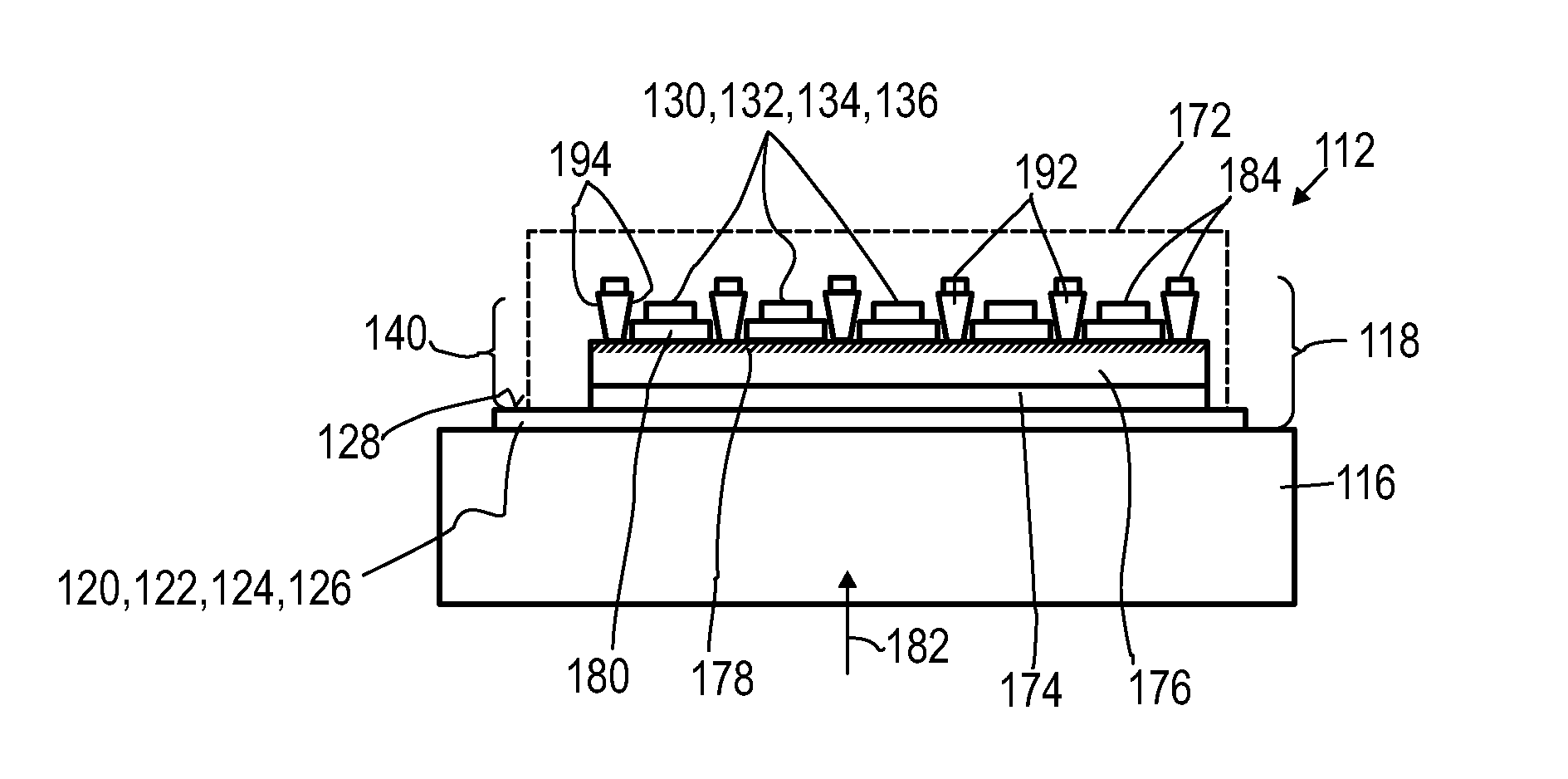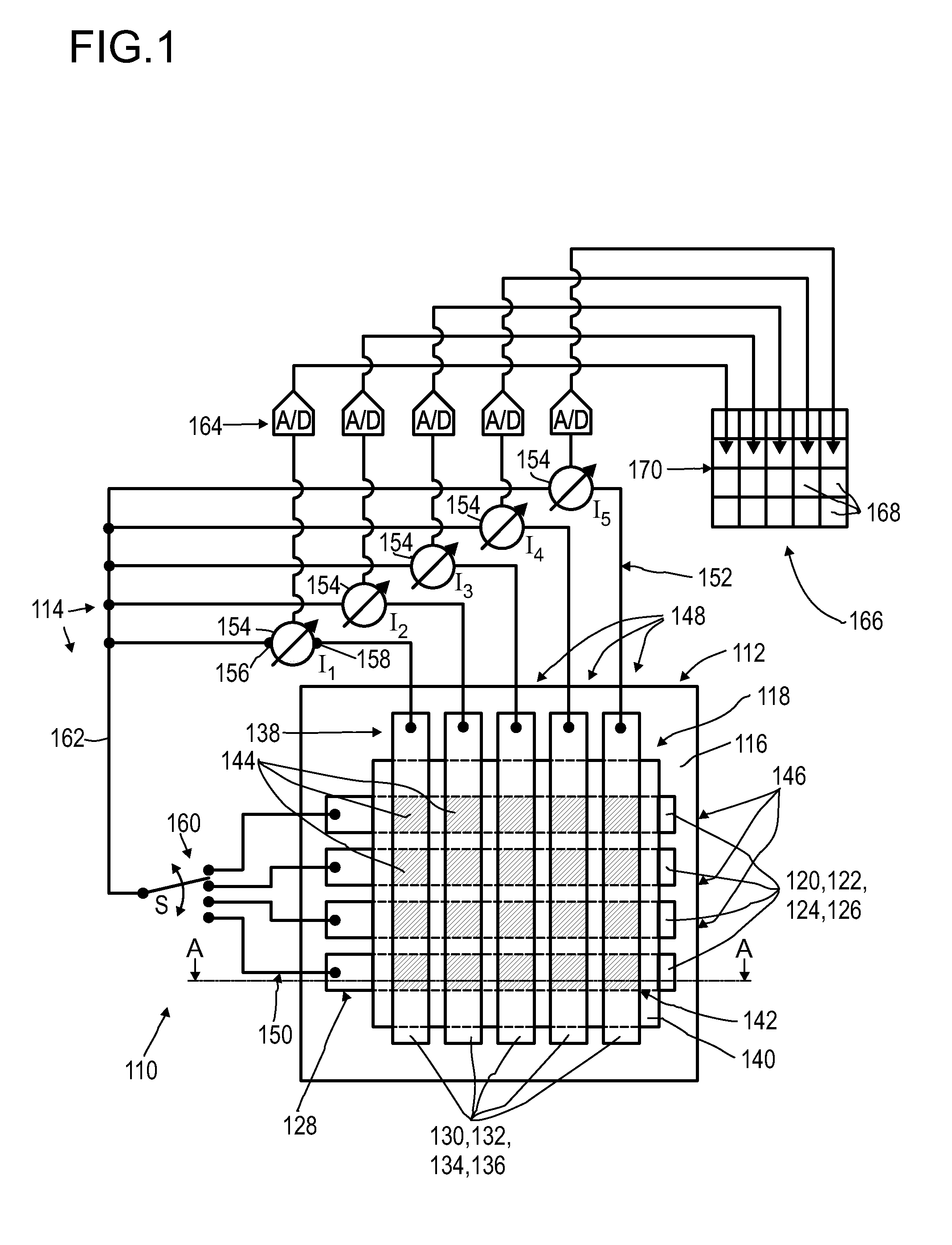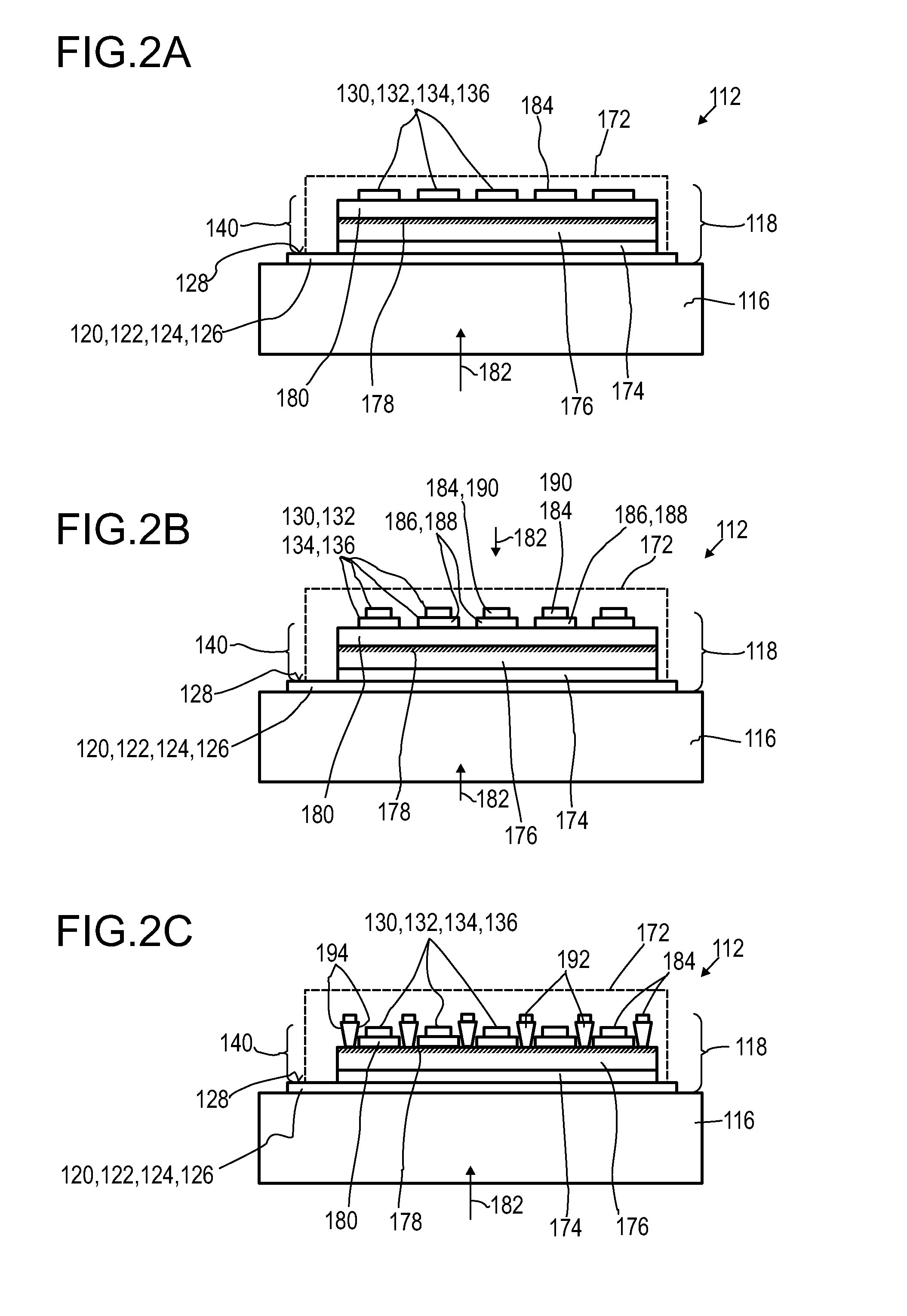Optical detector and method for manufacturing the same
a technology of optical detectors and optical sensors, applied in the direction of sustainable manufacturing/processing, instruments, comonautical navigation instruments, etc., can solve the problems of complex driving electronics of generating pixels and displaying pixels, and achieve the effect of reducing the number of optical sensors
- Summary
- Abstract
- Description
- Claims
- Application Information
AI Technical Summary
Benefits of technology
Problems solved by technology
Method used
Image
Examples
embodiment 1
[0256]An optical detector, comprising:[0257]an optical sensor, having a substrate and at least one photosensitive layer setup disposed thereon, the photosensitive layer setup having at least one first electrode, at least one second electrode and at least one photovoltaic material sandwiched in between the first electrode and the second electrode, wherein the photovoltaic material comprises at least one organic material, wherein the first electrode comprises a plurality of first electrode stripes and wherein the second electrode comprises a plurality of second electrode stripes, wherein the first electrode stripes and the second electrode stripes intersect such that a matrix of pixels is formed at intersections of the first electrode stripes and the second electrode stripes; and[0258]at least one readout device, the readout device comprising a plurality of electrical measurement devices being connected to the second electrode stripes and a switching device for subsequently connecting...
embodiment 2
[0259]The optical detector according to the preceding embodiment, wherein the optical detector further comprises at least one optical element for optically imaging at least one object onto the optical sensor.
embodiment 3
[0260]The optical sensor according to the preceding embodiment, wherein the at least one optical element comprises at least one lens.
PUM
 Login to View More
Login to View More Abstract
Description
Claims
Application Information
 Login to View More
Login to View More - R&D
- Intellectual Property
- Life Sciences
- Materials
- Tech Scout
- Unparalleled Data Quality
- Higher Quality Content
- 60% Fewer Hallucinations
Browse by: Latest US Patents, China's latest patents, Technical Efficacy Thesaurus, Application Domain, Technology Topic, Popular Technical Reports.
© 2025 PatSnap. All rights reserved.Legal|Privacy policy|Modern Slavery Act Transparency Statement|Sitemap|About US| Contact US: help@patsnap.com



